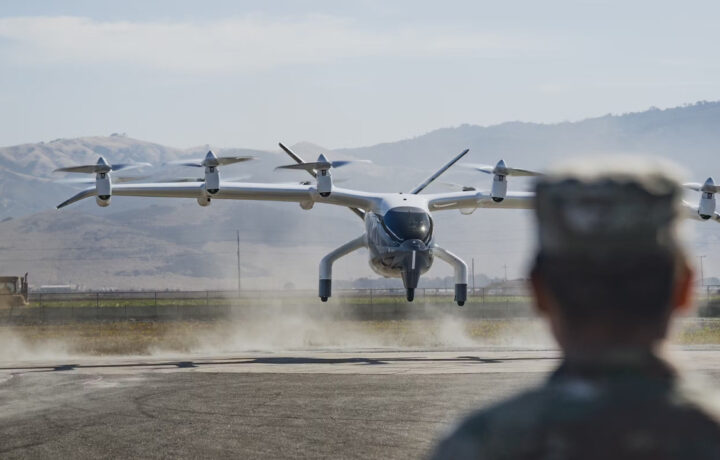Like Bob Dylan, the United States Air Force has gone electric – but without all that controversy six decades ago. The Air Force will soon begin testing an electrically powered vertical takeoff and landing fixed-wing aircraft that could be employed to transport personnel and carry upwards of 500 pounds of cargo.
Archer Aviation announces recently that the United States Department of Defense (DoD) took delivery of the first Midnight aircraft, which the air service will evaluate as part of an AFWERX Agility Prime contract. The Santa Clara, CA-based aerospace firm was awarded the contract worth up to $142 million last year.
Midnight Delivery
The delivery of the Midnight comes after the DoD completed its airworthy assessments for electric aircraft, and confirmed its readiness for flight testing by AFWERX. The flight tests were conducted with the Air Combat Command (ACC) and Air Mobility Command (AMC) and included multiday drills to determine how the aircraft would fare in a variety of real-world scenarios and military-specific mission concepts.
According to the company, a team of Air Force personnel worked alongside Archer’s flight test team to prepare the Midnight aircraft for its operations. The teams then executed simulated medical evacuation, cargo, intelligence, surveillance, and reconnaissance flights.
“This delivery represents a pivotal moment not only for Archer but for the future of military aviation,” said Adam Goldstein, CEO of Archer Aviation. “Together, our goal is to prove Midnight’s potential and ensure the United States continues to lead the way with the world’s most advanced technology.”
Transition Flight
In June the Midnight aircraft completed a “transition flight” at speeds over 100 mph (161 km/h) over Santa Clara – and the Archer Aviation aircraft is reported to be among the largest eVTOLs to complete transition, critical to being able to carry commercially viable passenger payloads.
According to Archer Aviation, “A transition flight occurs when the aircraft takes off vertically like a helicopter, accelerates forward, transitions from thrust-borne to wing-borne flight like an airplane with tilt propellers forward before decelerating and landing vertically.”
Midnight is the 7th full-scale eVTOL aircraft built by Archer Aviation’s Tom Muniz, company CTO, and chief engineer Dr. Geoff Bower. It is the second eVTOL from the company to successfully conduct a flight transition.
“Archer’s Midnight aircraft has the potential to significantly enhance our operational capabilities,” added Col. Elliott Leigh, AFWERX Director and Chief Commercialization Officer for the Department of the Air Force. “We look forward to continuing our work with our industry partners as we explore the ways that this advanced aircraft can contribute to the mission.”
The electric aircraft can be operated by a single pilot and is powered by 12 electric motors with independent battery packs. It is outfitted with propellers with two blades for the VTOL and five for tilt. It has a cruise speed of 150 mph (241 km/h), a range of 50 miles, and a ceiling of 2,000 feet (610 meters).
AFWERX has been exploring a “flying car” concept of electronic aircraft with VTOL capabilities for several years, and in December 2020 announced the successful test flight of the Joby S4 eVTOL aircraft.
Other Electric Aircraft
It was last month at Joint Base McGuire-Dix-Lakehurst that the Air Force conducted the first cargo flight as part of a demonstration of the ALIA CTOL (conventional takeoff and landing), a battery-powered fixed-wing aircraft. The National Aerospace Research and Technology Park (NARTP) in Atlantic City tested the BETA Technologies’ fixed-wing aircraft’s potential use as a cargo plane in a lap pattern flight from Atlantic City, Dover Air Force Base, and JB MDL.
The ALIA CTOL has a range of 250 nautical miles and a capacity for five passengers.




